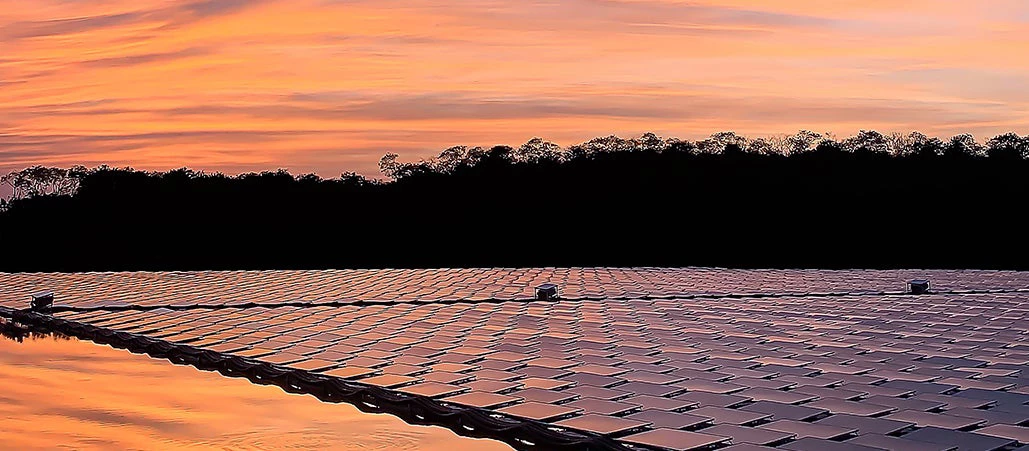 A floating solar farm on a lake at sunset.
A floating solar farm on a lake at sunset.
During my childhood, I often used to go boating in one of Delhi’s picturesque lakes. I loved the wobbly feeling of standing on the floating jetty before boarding the boat. Little did I know that these age-old platforms could one day play a pivotal role in generating solar power, contributing to India’s transition to renewable energy.
Given the escalating opportunity cost of land in India, it can leverage on its abundant water bodies and surging demand for energy. ‘Floating solar’ can help the country meet its ambitious target of installing 500 gigawatt (GW) of renewable energy by 2030. It will also help to achieve net zero emissions by 2070, as announced by the government under its ‘Panchamrita’ agenda.
The World Bank report, 'Unlocking Floating Solar Potential in India,' (Volume 1 [Main Report], Volume 2 [Guidance Document], Volume 3 [Green Jobs]) proposes key interventions to support the growth of this technology. These interventions, if implemented effectively, can create an enabling environment for the rapid expansion of floating solar power in India.
What is Floating Solar?
Floating solar involves installing solar panels on floating structures situated on water bodies such as lakes, reservoirs, and ponds. This not only utilizes otherwise unused water surfaces but also enhances the efficiency of the solar panels due to the cooling effect of water. By covering water surfaces, floating solar also reduces losses from evaporation, conserving precious water resources.
The first floating solar was established in Japan in 2007. However, the market for this technology has picked up since 2016. Almost all the large countries in the world now have modest floating solar installed capacity.
India boasts of the potential capacities of 280-300 GW in floating solar power. However, only a small fraction of its estimated potential has been installed in the states of Madhya Pradesh, West Bengal, Andhra Pradesh, Kerala, Telangana, Bihar and Rajasthan.
The modular technology of floating solar can cater to mini grids and off-grid power supplies to large-scale projects that are connected to the electricity grid and can be accessed by both urban and rural populations.
Overcoming Barriers
At present, the cost of generating floating solar power in India is higher than from ground-mounted installations due to several reasons. The eligibility criteria for a floating solar site are unclear and manufacturing capacity for floating solar equipment is limited. In addition, the standards and certifications required to install a plant are not comprehensive.
How can we accelerate the pace of adoption and maximize the benefits of floating solar?
- Firstly, establish clear targets for floating solar capacity to establish the country's overall solar energy goals.
- Create a repository of potential sites for floating solar projects to give a positive signal to the market and streamline the project development process.
- Promote the manufacturing of floating solar equipment and standardize procedures and certifications to ensure quality.
- Invest in institutions to conduct reliable feasibility surveys for successful floating panel projects.
Towards the future
Globally, deploying floating solar panels on existing hydropower reservoirs could meet 50% of the world’s total demand for electricity. Realizing this, several countries have started deploying this technology. However, floating solar still has a long way to go. While the global installed capacity of ground mounted solar is more than 1,000 GW, it is less than 10 GW for floating solar.
India’s experience as a pioneer in floating solar technology in South Asia could thus provide valuable lessons for other countries to follow.
Subscribe here to stay up to date with the latest Energy blogs.


Join the Conversation